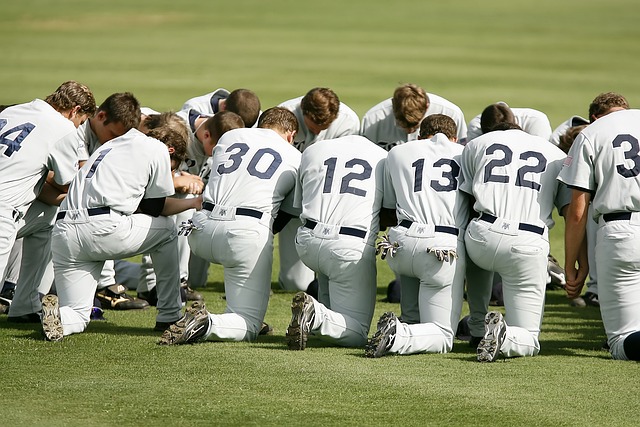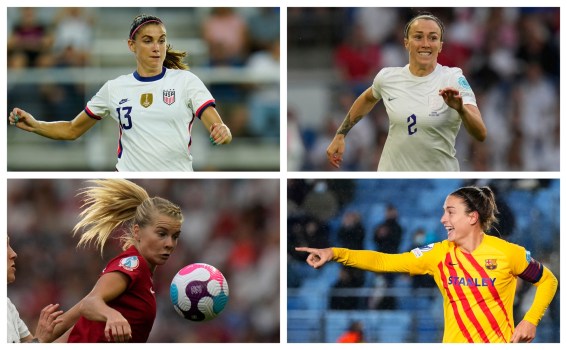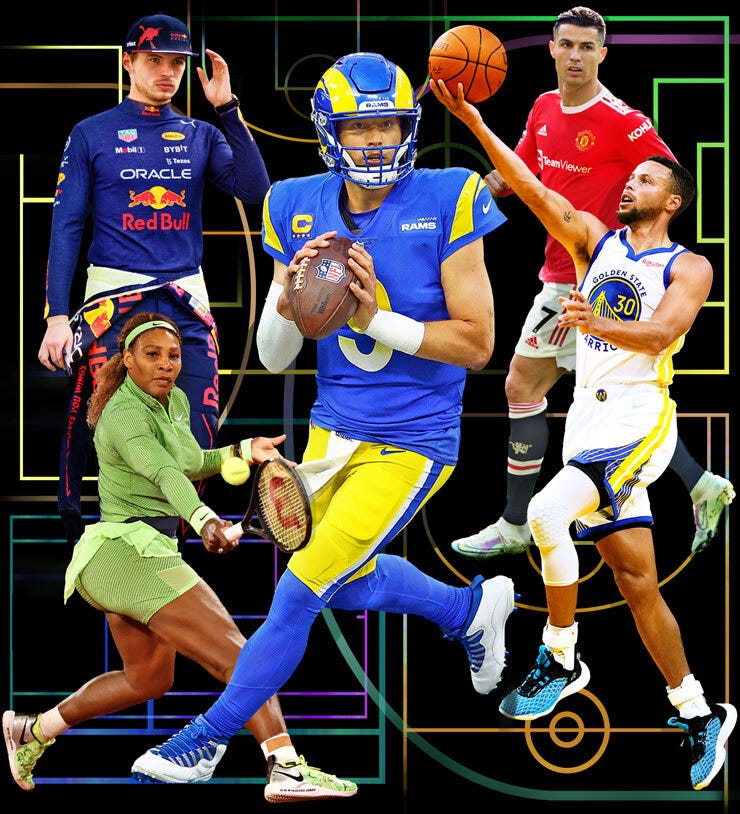What is the Whitest Sport? Uncovering the Racial Divide.
Golf is considered the whitest sport due to its predominantly white fan base and lack of diversity among players. Golf has struggled to attract a more diverse range of players, with racial barriers being cited as a potential reason for this lack of inclusivity.
The sport has a reputation for being expensive to play and being associated with privileged backgrounds, which may serve as a deterrent for those from lower-income families. Despite efforts to increase diversity, golf remains a primarily white sport, with only a handful of non-white players currently competing at the highest level.
This lack of diversity has been widely criticized, with many calling for greater efforts to make the sport more accessible to people from all backgrounds. While golf may have a reputation as the “whitest” sport, it is important to acknowledge and celebrate the achievements of non-white players and to work towards creating a more inclusive sporting landscape.

The History Of The Whitest Sport
What Is The Whitest Sport? Uncovering The Racial Divide
Sports have always been an essential part of human history. They promote fitness, camaraderie, and healthy competition. Yet, like everything else, sports have a racial divide, and some are perceived as whiter than others. This blog explores the history of the whitest sports and their links to imperialism, colonialism, and race.
The Impact Of Colonialism And Imperialism On Sports
The British Empire had an enormous impact on every aspect of life, including sports. The empire spread its sports as part of its colonial legacy, with cricket and rugby being two such examples. Imperialism saw sports as a way to “civilize” and control the colonized.
Colonizers brought sports to patronize and assimilate the colonized, which is why some sports have a racially charged association.
The Role Of Race In The Development Of Sports In America
In the united states, race played a critical role in the development of sports. Racial segregation meant black Americans had no access to competitive sports. It was not until the civil rights movement in the 1960s that black athletes could compete in sports.
Even today, some sports have a predominantly white association in America. For example, golf, lacrosse, ice hockey, and swimming.
The Links Between Race, Class, And Access To Sports
Apart from race, the class also impacts access to sports. Some sports are seen as elite, in which only the wealthy or financially secure have access to them. Golf and tennis, for example, are often associated with the affluent. The cost of entry to sports suggests that it has become more about making profits than including people in sports.
There is an emotional as well as an economic gulf in sports, and race and class play a paramount role.
Final Thoughts
Sports have an essential social and cultural significance in how they can unite, inspire, and promote healthy habits. Still, it is necessary to challenge the belief that some sports are whiter than others because of imperialism, race, and class. A more diverse and inclusive sport can enrich us all.
The Whitest Sports Today
What Is The Whitest Sport? Uncovering The Racial Divide
Sports have always been a means of breaking down barriers between cultures. Whether it’s the Olympics or a friendly game of soccer in the park, sports have played a significant role in bringing people together. However, there is still a racial divide in the world of sports, and some sports are considered ‘whiter’ than others.
In this blog post, we will delve into the world of sports and examine why certain sports are considered ‘white’ or ‘black. ‘ We will also determine why this divide still exists, despite all the progress made towards equality.
Basketball: Why Is It No Longer Considered A “Black” Sport?
Basketball is a sport that originated in America and was predominantly played by black athletes in the past. However, this trend has changed over the years, and now basketball is considered a sport for all. Here are some reasons why:
- International influence: The game of basketball has spread globally, and now many countries have basketball leagues. This international influence has made the sport more diverse.
- Media representation: The media has played a significant role in changing the perception of basketball. The coverage of the sport has been more extensive, and this has allowed athletes from all backgrounds to gain exposure.
- Increased opportunities: In recent years, opportunities for black athletes to excel in other sports have increased, and this has led to more diversity in basketball.
Baseball: America’s Whitest Major Sport
Baseball is considered the ‘American pastime,’ but it has been dubbed the whitest sport in America. Here’s why:
- The graying of baseball’s audience: Baseball has been around for a long time, and with that comes a mature audience. Younger audiences are more represented in other sports like basketball and football.
- High barriers to entry: Baseball has high barriers to entry, such as the cost of equipment and access to well-maintained playing fields. This makes it difficult for athletes from low-income backgrounds to participate in the sport.
- Unbalanced representation: Baseball has historically been dominated by white athletes, and this trend has continued to this day. The lack of diversity in the sport can have a negative effect on the recruitment of athletes from diverse backgrounds.
Tennis: A Sport Of Privilege
Tennis is a sport that has been historically associated with privilege, and this trend has continued to this day. Here’s why:
- Cost: Tennis is a very expensive sport, from the cost of equipment to the cost of training. It requires access to coaches, courts, and other resources that are not readily available to many.
- Racial barriers: Tennis has been traditionally dominated by white athletes, and athletes from other backgrounds have had to overcome racial barriers to participate in the sport.
- Country clubs: Tennis is often played at country clubs that have a history of having exclusive memberships. This has given rise to the perception of the sport is one of privilege.
The racial divide in sports is an issue that needs to be addressed. Despite the progress made toward equality, there still exists a significant imbalance in certain sports. Sports organizations need to work towards creating a more diverse and inclusive environment for athletes from all backgrounds. By doing so, they will help break down barriers and promote equality in the world of sports.
Why Are These Sports “White?”
What Is The Whitest Sport? Uncovering The Racial Divide
Sports have long been an outlet for competition, passion, and achievement, but how do they become ‘white-dominated,’ causing some sports to be perceived as less diverse than others? In this write-up, we will examine the factors that contribute to sporting activities being deemed ‘white,’ from economics and class to cultural norms and social capital.
How Cultural Norms And Expectations Shape Participation In Different Sports
The places we live in, society, and our peers all influence our perceptions of what is ‘normal’ and ‘appropriate. ‘ This idea of normalization applies to sports as well. Some sporting activities have been traditionally linked to specific ethnic groups, leading to limitations for others who don’t fit into that mold.
Here are the key points to understand:
- Socioeconomic class plays a vital role in the sporting activities people participate in.
- Perception of the sport’s culture determines an individual’s decision whether to partake or not.
- Athletes’ public identity is a major barrier to racial integration in sports.
The Role Of Economics And Class In Sports Participation
Economics has a direct impact on sports participation. Money undoubtedly affects the ability to play, as some sporting activities require expensive equipment, high-quality facilities, and extensive travel. Here, we will list the important points:
- Athletes from deprived communities have limited access to sports facilities and coaching.
- Infrastructure and quality facilities help nurture sports talent and foster its growth.
- Financial aid and scholarship programs provide athletes from low-income backgrounds access to education and sports.
The Impact Of Social Capital And Network Effects On Individual And Team Sport Participation
Social capital refers to the personal relationships and networks that we have access to in our daily lives. It determines who we know and how we interact with society. When it comes to sports, network effects are critical factors in deciding who gets opportunities to participate in sports.
Here are the key points:
- Social capital determines access to opportunities for athletic development and exposure.
- Team sports typically require social capital in terms of connections and influence.
- Individuals with extensive networks tend to have more success in team sports than individual sports.
The perception of sports norms, economics, and social capital are the main factors that determine why some sports seem to be more ‘white’ than others. While there isn’t a one-stop solution to make sports more diverse and inclusive, addressing these issues is a step towards making sports accessible to everyone, regardless of their race, class, or ethnicity.
The Impact Of The Racial Divide On Sports And Society
Sports have the power to unite people and overcome differences, but sometimes, they can also reflect our deepest racial divisions. Although we may never be able to say that one sport is objectively the “whitest,” there’s no denying that some sports, such as hockey, golf, and tennis, are predominantly played and watched by white athletes and fans.
This racial divide not only affects sports but also our society as a whole. In this section, we’ll explore how the racial divide in sports impacts fans’ attitudes, and non-white athletes’ psyches, and how we can increase diversity in certain sports.
How Does The Racial Divide In Sports Affect Fans’ Perceptions And Attitudes?
Sports fandom can be an emotionally charged experience. Fans often place their hopes, energy, and identity into their team’s performance and history. In this context, the racial makeup of sports can have a profound effect on fans’ perceptions and attitudes.
Here are some key ways:
- Fans often identify with athletes who share their ethnicity, culture, or background. When there is a lack of diversity, fans of color may feel less included, welcomed, or represented
- Fans may also view athletes of color with more scrutiny, pressure, or suspicion. This can lead to harmful stereotypes and discrimination, such as the persistent belief that black athletes are naturally superior in certain sports because of their genes.
- Conversely, white athletes may be praised or rewarded for their ability to succeed in sports that are seen as being “not meant” for them, such as basketball or football. This reinforces the idea that white athletes are more talented or deserving of recognition than non-white athletes.
What Is The Impact Of The Racial Divide On The Psyches Of Non-White Athletes?
Non-white athletes can face a unique set of challenges related to race and identity. When they compete in predominantly white sports, they may have to navigate stereotypes, racism, and discrimination both on and off the field. Here are some potential impacts:
- Non-white athletes may experience imposter syndrome or self-doubt when they don’t see many athletes who look like them or come from similar backgrounds. This can affect their confidence, motivation, or sense of belonging, and can even lead to dropouts or burnout.
- Even if non-white athletes are successful in their sport, they may face discrimination that white athletes don’t, such as being subjected to racial slurs or being portrayed as “angry” or “arrogant” in the media.
- Non-white athletes may also feel pressure to represent their entire racial or ethnic community, which can be a heavy burden to carry. They may worry that their success or failure reflects on their identity group as a whole.
How Can We Address The Problem Of A Lack Of Diversity In Certain Sports?
Increasing diversity in sports is a complex and long-term goal, but there are some practical steps that we can take to make progress in the right direction:
- Increase access to sports by providing resources, training, and opportunities to underrepresented communities. For example, programs that help young girls learn how to skateboard or that provide free hockey equipment to low-income families can help diversify those sports.
- Address biases and stereotypes in sports by educating athletes, coaches, and fans about the harmful effects of racism and discrimination. For example, NBA’s recent efforts to increase diversity among referees by providing implicit bias training are a step in the right direction.
- Celebrate and amplify the successes of non-white athletes in predominantly white sports to show that they are just as talented, hardworking, and valuable as their white peers. For example, the u.s. women’s soccer team’s recent world cup victory was a historic win for gender diversity and equality in sports.
By taking these steps, we can begin to break down the racial barriers that have long separated sports and help create a more inclusive, supportive, and barrier-free playing field for all athletes.
Frequently Asked Questions On What Is The Whitest Sport
What Sports Are Considered White-Dominated?
Sports such as hockey, swimming, and tennis tend to have a predominantly white demographic.
Why Are Certain Sports Whitewashed?
Some sports have a perceived image of being expensive or elitist, leading to less diversity.
Is There A Push For Diversity In Sports?
Yes, many organizations and initiatives aim to diversify sports and make them more inclusive for all.
Conclusion
As we’ve seen, the term “whitest sport” has sparked much debate and controversy. While there isn’t an objective answer to this question, it’s important to examine the factors that contribute to the perception of certain sports as predominantly white. Beyond race, there are other dimensions of identity such as gender, class, and nationality that have historically shaped sports participation.
It’s crucial to acknowledge these intersections and work towards creating a more inclusive and accessible sporting environment for all. Rather than perpetuating divisive myths, we should celebrate the diversity and complexity of sports culture and continue to strive towards social progress.
Ultimately, the “whitest sport” debate highlights the ongoing need for critical examination and dialogue around issues of identity and representation in sports.



